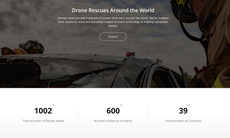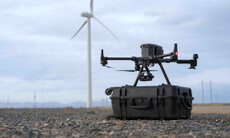Recent announcement by AT&T demonstrate the need for fresh thinking on cell tower inspections.

AT&T recently shared that the company has been utilizing drones to inspect conditions of its 65,000 cellular towers. The challenge is daunting. There are millions of cell towers in the US alone, all of which need to be inspected on a regular basis.
If intuition tells you these might make for attractive birdhouses, you’re right. Cell towers offer convenient and comparably safe homes for nesting birds. To make matters more complicated, according to federal environmental regulations, if the nesting species happens to be endangered, then teams must leave them be. An inspector’s is not an easy one.
All this is a headache for telecoms firms and inspection providers alike, simply because current processes are so laborious. Each tower is typically several hundred feet high requiring technicians to scale the mast via rope rigging. Unsurprisingly, despite best efforts, every year people are hurt in such operations due to weather, equipment and the aforementioned birds. Until a technician can get a close look at the tower, there’s little indication as to what problem they may need to fix. This means multiple trips, increased downtime and elevated personal risk.
Drones, with their high-resolution cameras, serve as a unique tool to provide initial inspection for the technicians. The majority of inspections are routine and don’t require a technician to scale the tower. The ability to do this remotely with a drone greatly increases the operational efficiency of the service providers, allowing them to identify towers with issues more quickly and minimizing the amount of time they spend hanging from ropes from the side of towers.
Cell towers are technically sensitive equipment, with lots of wires, transmitters, and distribution boxes. One commonly cited concern related to using drones for inspecting towers is the risk of a collision that cuts wires or damaging equipment. Deploying a drone with obstacle avoidance, such as DJI’s Phantom 4, along with an experienced operator are vital to safe operations. Interestingly, DJI recently partnered with US service operator Measure Aero, a specialist in technical inspection work.
Have you noticed how terrible your reception is every time you go to a concert? It turns out inspection work is not the only way that telecoms firms are deploying drones. An intriguing use case is “cell on wings,” or COW, deployment for temporary increases in cellular coverage. This is a very attractive solution for sporting events at stadiums or outdoor concerts that lead to demand spikes for connectivity. By deploying drones, operators can increase capacity flexibly according to demand.
It will be interesting to see how the telecoms industry will be deploying drones over the next 12 -18 months. With a variety of use cases and substantial safety and efficiency gains to be had, it is hard not to imagine adoption, and business, will be brisk.


